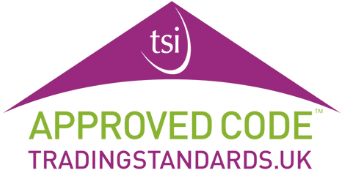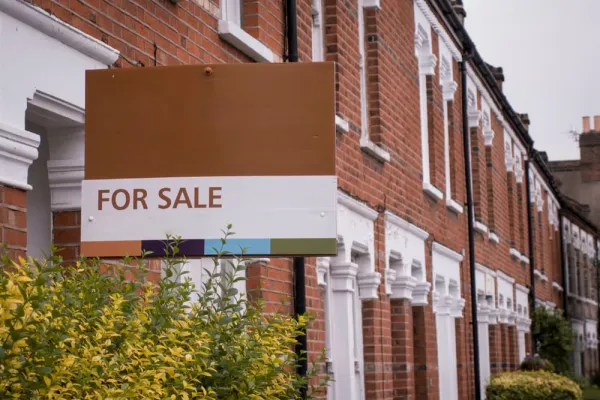When you decide to sell your house, it’s essential to ensure that you have all the necessary paperwork in order. This documentation streamlines the selling process and provides potential buyers with crucial information about your property. Preparing these documents in advance can help avoid delays and complications during the sale.
This blog will guide you through the vital paperwork you must gather when selling your house in the UK. Remember, the more organised and transparent you are with your documentation, the more confidence you will instil in potential buyers, increasing the likelihood of a successful sale.
Proof of Identity
As a seller, you must provide proof of your identity to your solicitor or conveyancer. This requirement is part of the UK’s anti-money laundering regulations, which aim to prevent fraudulent activities in the property market. Acceptable forms of identification typically include a valid passport or driving license and a recent utility bill or bank statement confirming your current address. Your solicitor will advise you on the required documents and may need to take certified copies for their records.
Title Deeds
Title deeds are legal documents that prove ownership of a property. When selling your house, you must provide the title deeds to your solicitor, who will then pass them on to the buyer’s solicitor. If you mortgage the property, your lender may hold the title deeds. In this case, your solicitor will request them from the lender. For properties registered with the Land Registry, you can obtain a copy of the title register and plan online. These documents outline the property’s boundaries, ownership history, and associated rights or restrictions. It’s essential to review your title deeds carefully before putting your house on the market, as any discrepancies or issues with the deeds could delay or complicate the sale.
Energy Performance Certificate
An Energy Performance Certificate (EPC) is a legal requirement when selling a property in the UK. This certificate provides potential buyers with information about your home’s energy efficiency, including its energy rating on a scale from A (most efficient) to G (least efficient). The EPC also includes recommendations for improving the property’s energy performance. Before selling your house, you must obtain an EPC from an accredited energy assessor. The certificate is valid for ten years, so if you already have a valid EPC, you can use that.
It’s worth noting that a higher energy rating can make your property more attractive to buyers, as it indicates lower running costs and a smaller environmental impact. If your EPC rating is low, consider implementing recommendations to improve your home’s energy efficiency. This could involve simple measures like installing loft insulation or more significant upgrades like replacing an old boiler.
Fitting and Contents Form
The Fitting and Contents Form (TA10) is a document that outlines which items you intend to include in the sale of the property. This form helps to avoid confusion or disputes over what is included in the purchase price. You should list all the fixtures and fittings remaining in the property, such as kitchen appliances, light fittings, and bathroom suites. You can also specify any items you plan to remove, such as curtains or freestanding furniture. Be as detailed as possible when completing this form to ensure buyer clarity.
It’s essential to be honest and accurate when completing the Fitting and Contents Form. Suppose you indicate that certain items will be included in the sale. In that case, you must ensure they are left behind when vacating the property. Failure to do so could lead to legal disputes with the buyer. Consult your solicitor for guidance if unsure whether an item should be included. Remember, the more transparent and forthcoming you are about what is included in the sale, the smoother the transaction will be for all parties involved.
Property Information Form
The Property Information Form (TA6) is a comprehensive questionnaire that provides buyers with essential information about your property. This form covers a wide range of topics, including boundaries, disputes with neighbours, planning permissions, warranties, and any alterations made to the property. To your knowledge, you must complete this form and provide supporting documentation where applicable. Be truthful and accurate when filling out the Property Information Form, as misleading information could lead to legal issues.
When completing the Property Information Form, it’s crucial to disclose any known issues or defects with the property. This includes structural problems, dampness, pest infestations, or any other matters that could affect the buyer’s decision to purchase. While it may be tempting to downplay or omit specific issues, doing so could leave you open to legal action if the buyer discovers these problems after completion.
Building Regulations Certificates
Suppose you have done significant work on your property, such as extensions or structural alterations. In that case, you may need to provide Building Regulations Certificates. These certificates confirm that the work complies with building regulations and standards. You should have received these certificates when the job was completed. If you cannot locate them, contact the relevant local authority or the contractor who carried out the work. In some cases, you may need to obtain retrospective approval, which can be a lengthy and costly.
It’s important to note that not all work requires approval from the Building Regulations. Minor alterations, such as replacing windows or doors, may be exempt. However, suppose you need clarification on whether the work on your property requires approval. In that case, it’s best to err on the side of caution and investigate further. Your solicitor can advise you on the specific requirements for your property and help you obtain any necessary certificate. Ensuring that all work on your property complies with Building Regulations can provide peace of mind to potential buyers and avoid any legal issues arising from non-compliance.
Health and Safety Forms
Depending on the age and condition of your property, you may need to provide additional health and safety forms. For example, suppose your home was built before 2000. In that case, you should supply a Gas Safety Certificate (CP12) to confirm that gas appliances and installations are safe. If your property has an open solid fuel fireplace or stove, you may also need to provide a HETAS Certificate to demonstrate that it complies with safety regulations. Your solicitor will advise you on any specific health and safety forms required for your property.
Copy of lease (if leasehold)
If your property is leasehold, meaning you own the right to occupy the property for a specified period, you must provide a copy of the lease to the buyer. The lease is a legal contract between you and the freeholder (the owner of the land on which your property is built). It outlines the rights and responsibilities of both parties, as well as the duration of the lease and any ground rent or service charges payable. Your solicitor will review the lease and address any potential issues or concerns with the buyer’s solicitor.
Mortgage Offer (if applicable)
If the buyer is purchasing your property with a mortgage, they must provide a copy of their mortgage offer to your solicitor. This document confirms that the buyer has secured the necessary financing to purchase. Your solicitor will liaise with the buyer’s solicitor and lender to ensure the mortgage funds are transferred in time for completion. If you have an existing mortgage on the property, your solicitor will also arrange for the redemption of this mortgage upon completion of the sale.
















